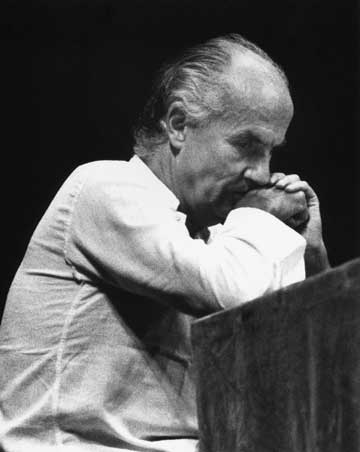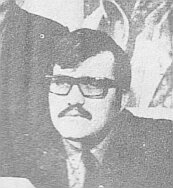
Hand in hand with his espousal of the latest technical advances in compositional structuring, Nono espoused politcal messages in his music. An avowed Marxist and leading member of the Italian communist party, Nono saw his political ideas and his musical ideas as intimately related. He wrote in 1969, "I realized that it was no difference whether I was writing a score or helping to organize a strike. They are just two sides of the same coin."
To this end, Nono's music has an important political dimension. One finds references to the Algerian revolution, Auschwitz and politcal upheaval in Vietnam, Cuba and South America throughout his work. For his texts he chose the writings of Lorca, Pavese, Ungaretti and Machado and became increasingly reliant on the voice, which he saw as an ultimate expression of humanity, often in conjunction with the latest technical advances in electronic sound processing.For Nono, the composer needed to be involved in life, needed to study history, gather experience, and be abreast of the latest advances in science, technology and art in order to more fully be an active participant in society.
Nono also pioneered new ways of listening to music. From the quietest sounds, to microtonal and one-note music, to new possibilities of spatializing a sound, Nono was constantly seeking a way for the listener to participate in the experience of the sound. Similarly, Nono worked in close collaboration with a few select musicians to develop new techniques and ideas in order to force them to think of sound in a different way.
